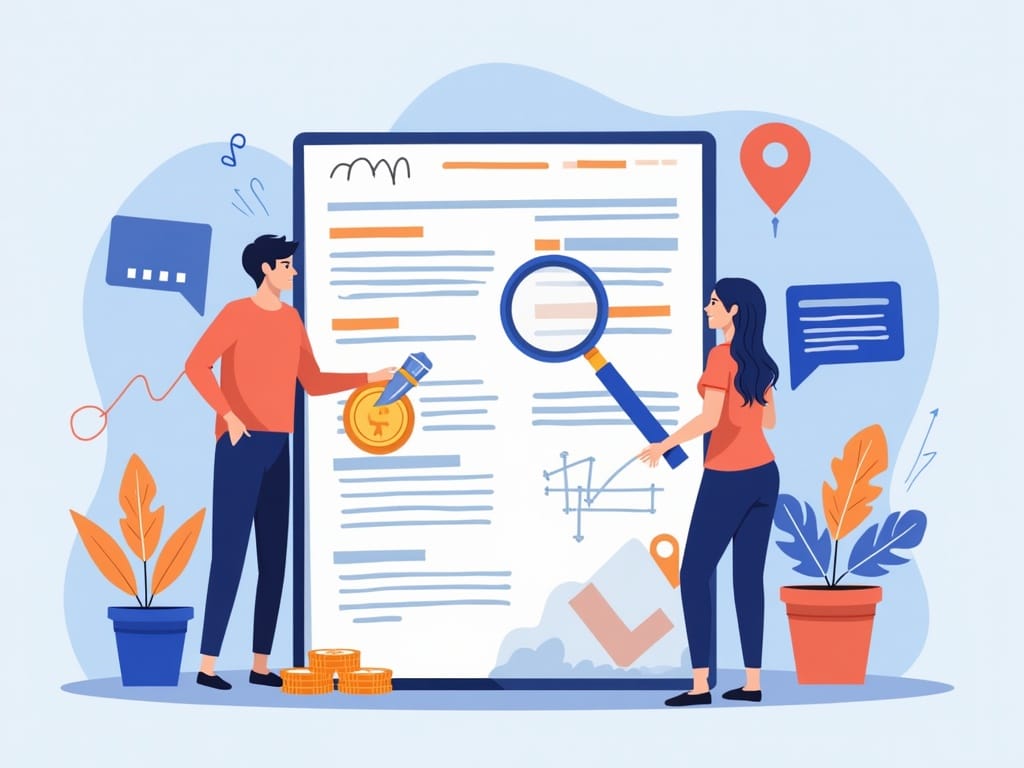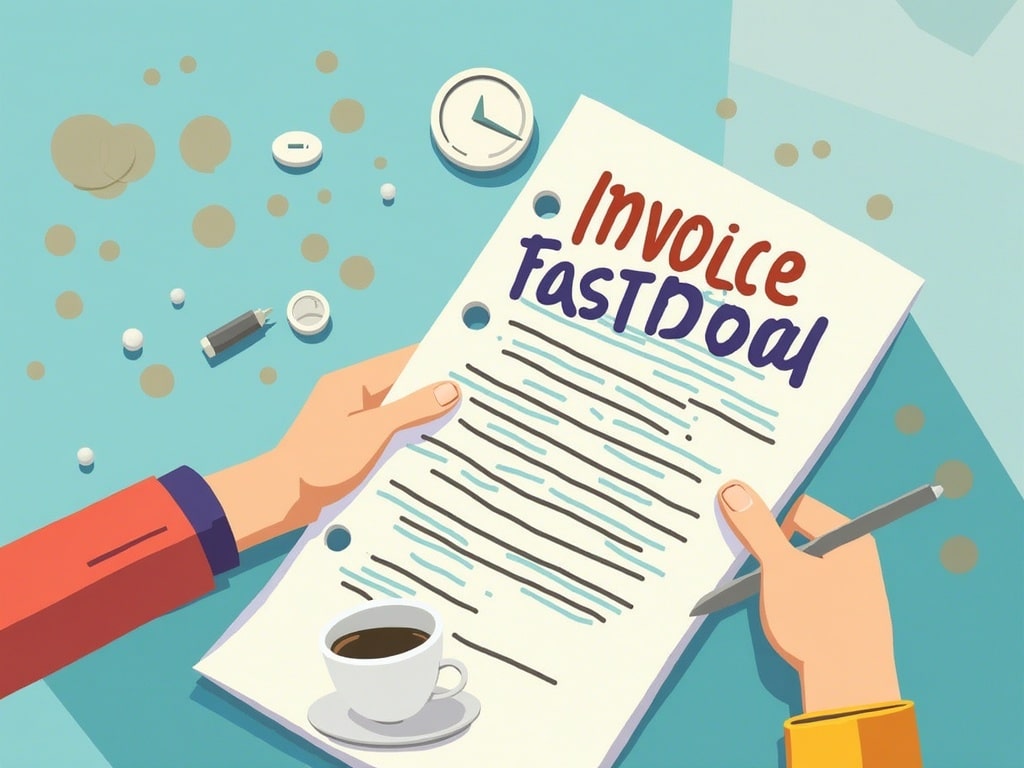How to Invoice Properly: A Guide to Getting Paid On Time
Imagine this: you’ve poured your heart and soul into a project, delivered exceptional results, and now… silence. The client is happy, but your bank account isn’t. The culprit? A poorly constructed invoice. More than just a bill, an invoice is a crucial communication tool, a legal document, and your ticket to getting paid promptly. Mastering the art of invoicing properly can be the difference between thriving and struggling in the world of freelancing and small business.
Why Proper Invoicing Matters
Let’s be blunt: no one enjoys chasing payments. A well-structured invoice minimizes the need for follow-ups, clarifies expectations, and projects professionalism. Here’s why getting it right matters:
- Faster Payments: Clear, concise invoices leave no room for confusion, leading to quicker processing and payment.
- Improved Cash Flow: Predictable income is the lifeblood of any business. Consistent invoicing helps maintain a healthy cash flow.
- Professionalism: A polished invoice reflects positively on your brand and builds trust with clients.
- Legal Protection: Invoices serve as legally binding documents that can protect your interests in case of disputes.
- Simplified Bookkeeping: Well-organized invoices streamline your accounting processes and make tax season less stressful.
The Essential Elements of a Winning Invoice
Think of your invoice as a story – it needs to tell the client exactly what they’re paying for, when it’s due, and how to pay. Here are the key ingredients:
1. Header Information: Your Brand Identity
Start with a professional header that clearly identifies your business:
- Your Business Name and Logo: Use your official business name (or your name if you’re a freelancer) and include your logo for brand recognition.
- Contact Information: Provide your full address, phone number, and email address. Make it easy for clients to reach you with questions.
2. Client Information: Who Are You Billing?
Accurately record the client’s details:
- Client’s Business Name: Use the correct legal name of the company.
- Contact Person: If applicable, include the name of the person you’re dealing with.
- Client’s Address: Ensure the address is accurate for proper delivery.
3. Invoice Number: Organization is Key
Assign a unique invoice number to each bill. This is crucial for tracking and record-keeping. A simple sequential system works well (e.g., 2023-001, 2023-002).
4. Date of Issue: When Was the Invoice Created?
Clearly state the date the invoice was issued. This helps establish a timeline for payment.
5. Payment Due Date: Set Clear Expectations
Specify the date when the payment is due. Common options include Net 30 (payment due within 30 days), Net 15, or a specific date. Be clear and consistent.
6. Description of Services: What Are They Paying For?
This is where you detail the services or products you provided. Be specific and avoid vague terms. Break down the work into individual line items, including:
- Detailed Description: Clearly explain what each line item represents (e.g., Website Design – Homepage).
- Quantity or Hours: Specify the quantity of products or the number of hours worked.
- Rate: Indicate your hourly rate or the price per item.
7. Subtotal, Taxes, and Total: The Final Calculation
Present the final amount clearly:
- Subtotal: The total cost of your services or products before taxes.
- Taxes: If applicable, clearly state the tax rate and amount.
- Total: The final amount due, including taxes. Make it prominent.
8. Payment Terms: How Can They Pay You?
Clearly outline your preferred payment methods. Include:
- Accepted Payment Methods: List all the ways clients can pay you (e.g., bank transfer, credit card, PayPal, check).
- Bank Details: If accepting bank transfers, provide your account name, bank name, sort code, and account number.
- Payment Instructions: Provide clear instructions on how to make the payment (e.g., Please make the payment to the account details above, quoting the invoice number as a reference.).
9. Notes: Personalize and Clarify
Use the notes section to add any additional information, such as:
- Thank You Message: A simple Thank you for your business! goes a long way.
- Late Payment Policy: Clarify any late payment fees or interest charges.
- Project-Specific Notes: Include any relevant details about the project.

Beyond the Basics: Tips for Invoicing Success
Creating a professional invoice is just the first step. Here are some additional tips to ensure you get paid on time and maintain positive client relationships:
1. Invoice Promptly: Strike While the Iron is Hot
Send your invoice as soon as the work is completed. The longer you wait, the lower the priority it becomes for the client.
2. Choose the Right Invoicing Software: Streamline Your Workflow
Consider using invoicing software to automate the process. Popular options include FreshBooks, QuickBooks Online, and Zoho Invoice. These tools can help you create professional invoices, track payments, and send reminders.
3. Send Reminders: Gentle Nudges are Okay
Don’t be afraid to send polite reminders if payment is overdue. Start with a friendly email and escalate if necessary. Automated reminders from invoicing software can be helpful.
4. Follow Up: Don’t Let Invoices Fall Through the Cracks
If reminders don’t work, follow up with a phone call or email. Be professional and persistent. Document all communication.
5. Offer Payment Options: Make it Easy to Pay
The more payment options you offer, the easier it is for clients to pay you. Consider accepting credit cards, online payments, and even payment plans for larger projects. Providing different options can help encourage quick payments and foster a better business realtionship.
6. Negotiate Payment Terms Upfront: Avoid Surprises
Discuss payment terms with clients before starting a project. This includes the payment schedule, due dates, and acceptable payment methods. Get everything in writing in a contract or agreement.
7. Keep Accurate Records: Stay Organized
Maintain detailed records of all invoices, payments, and communication. This will help you track your income, manage your finances, and resolve any disputes that may arise.
8. Be Professional: Maintain a Positive Attitude
Even when dealing with late payments, maintain a professional and respectful attitude. Avoid being confrontational or accusatory. Focus on finding a solution that works for both parties.
Common Invoicing Mistakes to Avoid
Even with the best intentions, mistakes can happen. Watch out for these common invoicing blunders:
- Incomplete or Inaccurate Information: Double-check all details, including client information, invoice numbers, and payment terms.
- Vague Descriptions: Be specific about the services or products you provided.
- Incorrect Calculations: Verify your math to avoid errors in the subtotal, taxes, and total amount.
- Missing Payment Terms: Clearly state your preferred payment methods and due dates.
- Sending Invoices Late: Invoice promptly after completing the work.
The Bottom Line: Invoicing is an Investment in Your Success
Mastering the art of invoicing properly is an investment in your business’s success. By creating clear, professional invoices, following up promptly, and maintaining open communication with clients, you can ensure you get paid on time and build strong, lasting relationships. So, ditch the generic templates, embrace these best practices, and watch your invoice strategy transform your cash flow and your business!




